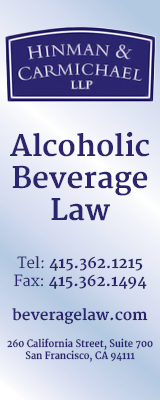FREE! Subscribe to News Fetch, THE daily wine industry briefing - Click Here
![Banner_Xpur_160x600---Wine-Industry-Insight[63]](/wp-content/uploads/Banner_Xpur_160x600-Wine-Industry-Insight63.jpg) |
 ALSO SPONSORED BY: 
Wine Industry Insight |
 |
Calif Wine Retail Sales Value Soars 25% from 2014 to 2014 (Not a typo)
After yearly increases of a billion dollars or so (plus or minus) every year since 1998, the estimated retail value of California wine to the United States has made an astonishing leap.
As shown in the images below, 2014 went from $24.6 billion when the estimate was published in 2015 to $30.3 billion in 2016.
According to knowledgeable experts familiar with the revisions, that increase came not from a miraculous growth spurt, but by an updated methodology of estimating consumer expenditures on wine.
2014 Reported in 2015
2014 Reported in 2016
This new methodology, said experts involved in its creation, looked at a wider variety of information and statistical data that had not been available when the Wine Institute first started publishing this data several decades ago.
The old level of retail value estimates, say sources close to the revision, had originated with data arrived by consensus of wineries that were members of the Wine Institute in collaboration with Gomberg, Fredrikson & Associates.
That method, however, left some money on the table every year.
This is partly because the wine industry was growing like crazy and many of the new wineries sold wine at much higher price points that were outside of channels captured by scanner data companies, such as direct-to-consumer sales.
In March 2016, Wine Communications Group and BW166 bought Gomberg, Fredrikson & Associates. Subsequently, BW166 principal Jon Moramarco took a closer look at the methodology.
According to Moramarco, “My estimates showed that over time, consumer expenditures had been growing at a 6.1% annual rate as opposed to the historical Wine Institutes estimates of 5.5%. Not a big difference annually but it was significant when compounded over many years.”
Moramarco said he looked at data from the U.S. Department of Commerce as well as other government resources in conjunction with scan data and import values which offered additional data and found that not all the consumer expenditures had been captured by the historical methods.
To find the missing pieces, Moramarco said he:
- Analyzed of the top companies and brand volumes as reported to third party services.
- Examined all the Board of Equalization filers and looked at tax paid shipments as well as in bond transfers.
- Used a three-year average to estimate annual shipments for transfers in bond. In some cases, Moramarco said he used Nielsen prices, in other cases prices tied to reviews and in other cases website prices. For the latter two he said he discounted the pricing somewhat since these were suggested retail prices.
- Looked at the grape crush by region, grape type and pricing to calculate estimated retail value from a wine type standpoint.
- Examined DTC reports as well as estimated sales from winery tasting rooms.
Analyzed trends in imports, wine types and import values over time.
“All of this was triangulated to come up with a better methodology for calculating consumer expenditures,” said Moramarco.




